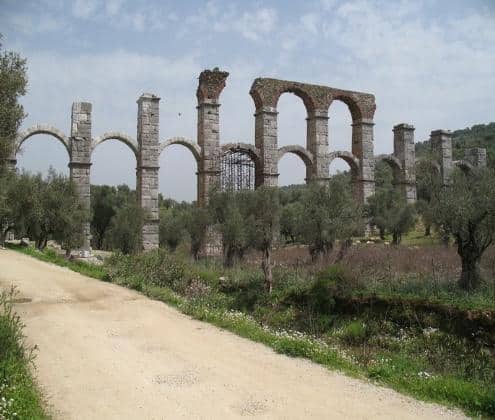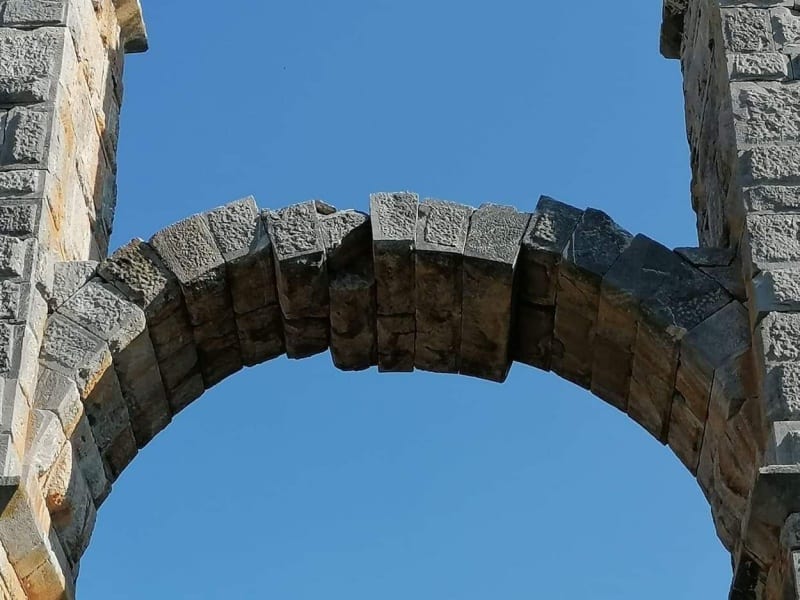
A Roman aqueduct in the area of Moria on Lesvos will be cleaned, fenced in, and the land it stands on will be expropriated, Greece's Ministry of Culture announced earlier this week.
Dated tentatively to the end of the 2nd AD century or early 3rd, the aqueduct was built to transport water from the sources at Olympos to the ancient town of Mitilini, a distance of nearly 28km. Estimates say it could supply 127,000 cubic meters of water to the town per day.
Some of its unique characteristics include classical-era elements and advanced engineering skills, resolving issues of irregular terrain, different water levels, and traversing valleys.
Its most outstanding feature is the water bridge or archway visible in Moria, 170m long and at its greatest height 26m off the ground.
It consists of 17 square pylons, arches, and an upper register made of compact clay bricks.


Support to restore and support the structure came from the 2000-2006 EU funding period, with that project concluding in 2004.
However, the ministry said, "the monument's long-term exposure to the elements, the irregular terrain (foundations on a streambed) and mainly recent seismic activity in the region of Lesvos island, have contributed to reducing the aqueduct's durability and stability."
It added that recent earthquakes displaced some of the stones on the central arch of the water bridge, and "immediate measures to save critical parts of the monument are necessary."
Works initiated by Culture Minister Lina Mendoni include a grant of €30,000 to the Lesvos Ephorate of Antiquity to clean the area, remove rusty and useless supports, and to fence the area. The process of expropriating the land will also begin by drawing a file for the approval of the Central Archaeological Council.
In addition, a €90,000 grant to the local restoration directorate will help it draw a report evaluating its current state, and recording it on paper and through photography, as well as propose measures to protect it.

